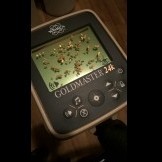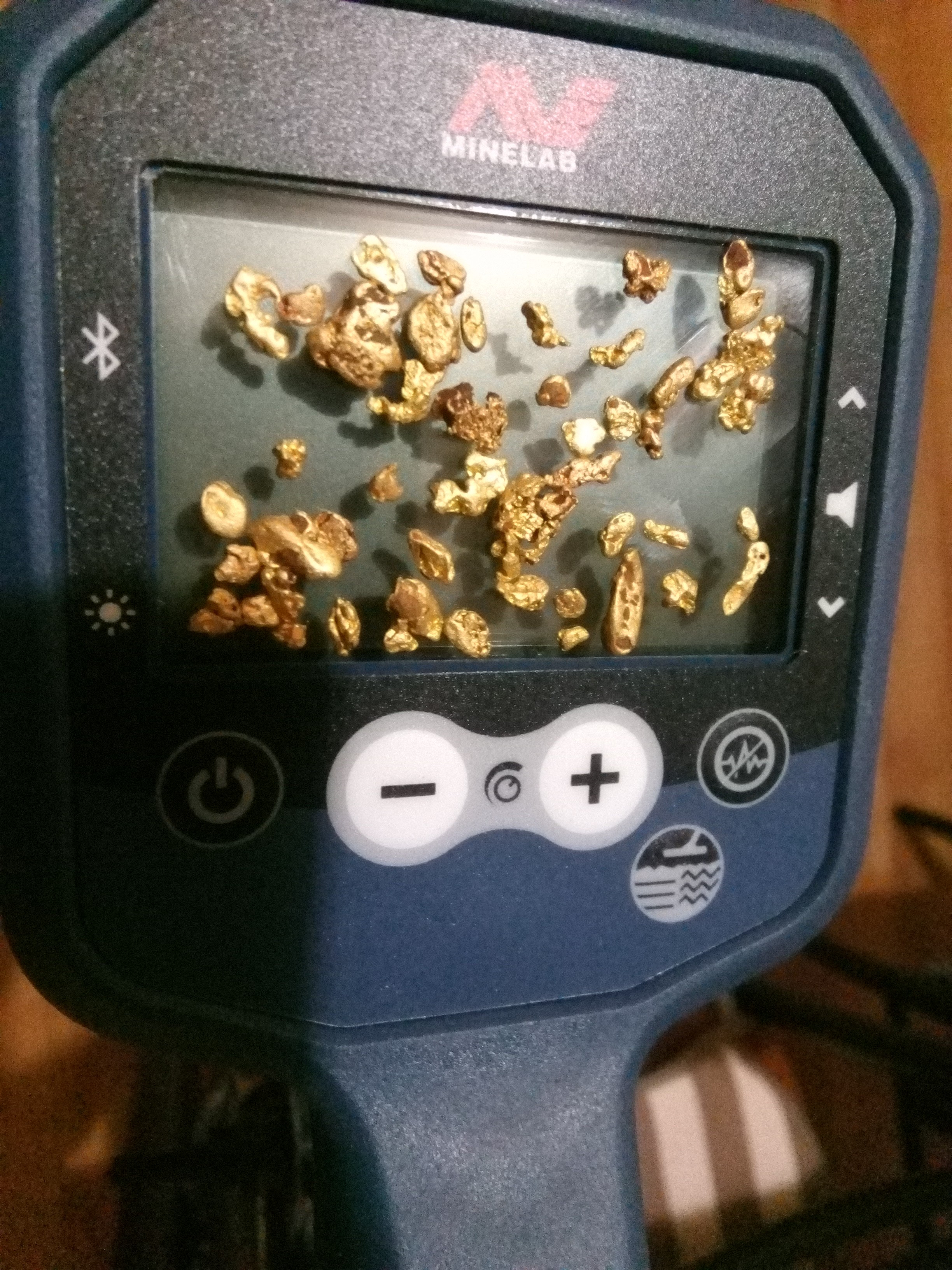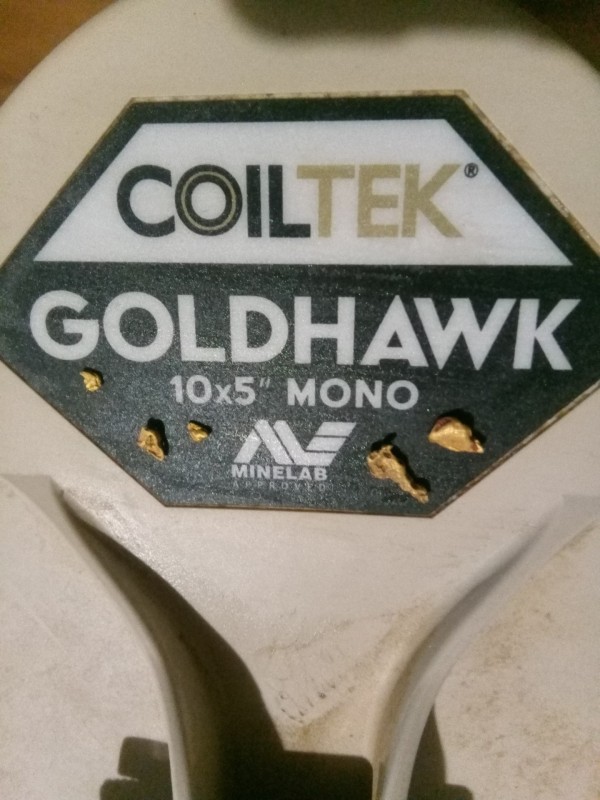-
Posts
1,047 -
Joined
-
Last visited
Content Type
Forums
Detector Prospector Home
Detector Database
Downloads
Everything posted by Aureous
-
I've often heard reference to people in WA say 'we've got the hottest ground' and I've detected in every state except Tas and Qld and I can honestly say that Vic and SA have the worst 3 spots I've ever seen. In WA, I've detected ground from the Kimberley, all the way down to Norseman and apart from salt mineralization, the Pilbara had the worst in that state. For a sheer barrier, the ground at Salvation Hill near Dunolly is by far the worst. A detector shop used to have a slab of dirt from there on the counter which was arc-welded together....it was maybe 70% iron! You'd be lucky to get a few inches depth on a multi gram nugget there. John HS's claim at Beggary Hills in Wedderburn was similar. I was astounded at the lack of punch there too.....as well as the sheer noise!
-

First Afternoon Using The Goldhawk 10x5 Mono
Aureous replied to Aureous's topic in Detector Prospector Forum
A Faraday screen is very limited in its ability, it works but only to a certain %. Steel wool does the same. The coil is about as shielded as it can possibly be (aftermarket ones) and so the remaining noise absorbed from the oscillator and receive circuit (40-50%) is about the only noise we can attempt to combat. A barrier and not a screen is the only way to attempt this. It may require a ground (awkward-may void warranty) connection inside the control box but hopefully not. We'll see.... -

First Afternoon Using The Goldhawk 10x5 Mono
Aureous replied to Aureous's topic in Detector Prospector Forum
There is a 'formula' of sorts which is used on medical imagery machines. I will use the same idea and add it to my DD-Leather 6000 control box cover. Not ideal coz it doesn't cover every square inch of the control box, but good enuff to see if there's a distinct difference. If there is, I will create a template in canvas and apply the concept to that...and then apply the template to the control box, complete with conductive tabs to basically shield the whole thing without gaps. I don't use the speaker so that helps (I can wrap the shield template right over the speaker grill) but I will need a conductive tab to open the shield to remove the battery for recharging purposes of course. See how the first step goes on Saturday when the hot weather here eases up a little. -

GPX 6000 14" DD Coil Videos, Finds, Discussion & Tips
Aureous replied to Northeast's topic in Minelab Metal Detectors
As I posted earlier, the 14DD was made to that size in order to near-match the 11 mono in sens and depth so that the user didn't feel like he/she/it was missing out on targets. ...and yes, the smaller DD coils when they arrive will lose depth on bigger targets but be equally as good on the small stuff as every other coil when used in AI mode. Standard DD mode will lose a bit of both of course... -

A Video Explaining The Garrett Focused Core DD Coils
Aureous replied to phrunt's topic in Garrett Metal Detectors
The ATX also uses these style DDO coils as well. They just didn't decide to call them a special name until now.... so they've been around for 10 years.... -

GPX 6000 14" DD Coil Videos, Finds, Discussion & Tips
Aureous replied to Northeast's topic in Minelab Metal Detectors
Thats not my experience, Ive gotten 3 bits of tiny gold with the 14DD that are equally heard on the 11". I echo your hot rock experience...I recently detected near a railway line and got a sh*tload of blue-stone basalt hotrocks at depth...drove me nuts! Normally I dont get such reactive hotrocks so it really surprised me. Made me think of you guys in recent-volcanic areas that deal with them all the time.... -

GPX 6000 14" DD Coil Videos, Finds, Discussion & Tips
Aureous replied to Northeast's topic in Minelab Metal Detectors
The 14" size for the DD coil was a deliberate choice by Minelab to 'replicate' the overall depth and sensitivity ability of the 11" mono. As the DD has half of the windings made redundant in AI mode, the actual diameter that is 'active' is very close to that of the 11" mono. Any smaller DD made will have a lesser active diameter and hence, a lesser depth on bigger targets. The sensitivity will remain very high though of course. But, as you noted, the ability of such a big coil to hit tiny gold is quite astonishing. Its made easier by the virtue of the AI mode making all EMI noise non existent. -

First Afternoon Using The Goldhawk 10x5 Mono
Aureous replied to Aureous's topic in Detector Prospector Forum
Yeah, I was too.....I was expecting a much lower effect from the powerlines for sure. The 12x7 easily had half the noise of the 10x5. But the total lack of Y axis noise was easily the winning attribute. Once I got away from the powerlines, I could run up the gain and drop into 'Normal' mode a few times even. All the lead shot and tiny flakes of blasting cap genuinely surprised me. I'm also soon to create an add-on shield for my 6000 and see how that goes for reducing the EMI noise. -

Best Prospecting Season In Laverton?
Aureous replied to Ethan in Adelaide's topic in Detector Prospector Forum
Use Tengraph to find pending ground and select nearby exploration licenses to apply for a 40e permit. That way you've got a very large area to prospect and dont need to move around as much. Finding spots that have nearby bitumen roads will be a harder task but not impossible. Just takes more time to find em.... -

First Afternoon Using The Goldhawk 10x5 Mono
Aureous replied to Aureous's topic in Detector Prospector Forum
I will be using both, maybe 50% even split. If I had to choose 1, it would be the Xceed 12x7 coz its quieter and does a generally good job for all detecting scenarios. But the 10x5 is ideal for old diggings, tailings etc. -

Best Prospecting Season In Laverton?
Aureous replied to Ethan in Adelaide's topic in Detector Prospector Forum
It runs direct via bluetooth and the Zoleo app on your own phone. The data you use is via Zoleo and a monthly subscription which you can turn off/on when you need it so you only pay for what you use. Uses the Iridium satellite network. Can text and email anywhere. -
Today I got my Goldhawk 10x5 mono and gave it a thrash on my currently producing spot where my Xceed 12x7 has found me 64 bits for just over 8 grams in the last week or so. The spot has high EMI from powerlines which the 12x7 handled extremely well. The GPX6000 likes the Xceed 12x7 a lot, very quiet in these high EMI areas. As soon as I tried the Goldhawk 10x5, I noticed it couldn't handle the EMI anywhere near as well. Noisy to the point of just walking away, three frequency scans, dumb the detector down to manual 2 and it was still unbearable. This was a disappointment to say the least. I happily noticed the Earth-field Y axis noise wasn't present with the 10x5 as I'd demonstrated to myself a couple weeks ago with my friends coil. This is a huge bonus with this coil coz I can now basically 'harvest' all the old diggings and tailings for small gold that no-one else can hear. A couple others I know are doing just this with 20-30 bits per afternoon being an easy feat. A gram or two each day adds up quick. So, I gave up on the high EMI area and wandered an extra 30m away from the powerlines and began concentrating and adjusting the settings for noise and stability. This was an area I'd already flogged with the 6000 and the stock 11 mono. To my surprise, the end result was 45 bits of junk and 5 bits of gold for exactly 1 gram. Lead shot made up the lions share (38) of junk. I even found a broken bronze snake buckle at 10 inches! The extra sensitivity and depth on tiny targets makes this an outstanding coil. Very sharp and obvious signal quality, even on pinhead sized gold. I can recommend this coil to anyone who wants to harvest small gold on old diggings. There's a lot of it out there! I will certainly be using this coil a lot and keeping tabs.
-

Best Prospecting Season In Laverton?
Aureous replied to Ethan in Adelaide's topic in Detector Prospector Forum
Been quite a few years since I've been there... phone service was poor except near the major mines or on high hills. If comms are a worry, get a Zoleo sat communicator to link to your phone. -

Best Prospecting Season In Laverton?
Aureous replied to Ethan in Adelaide's topic in Detector Prospector Forum
Overall, very low rainfall BUT, if it does, you're stuck.....so take a heap of emergency food n water to last 2 weeks at all times. Been there, done that..... -

Best Prospecting Season In Laverton?
Aureous replied to Ethan in Adelaide's topic in Detector Prospector Forum
Laverton incl weather info -

Best Prospecting Season In Laverton?
Aureous replied to Ethan in Adelaide's topic in Detector Prospector Forum
Mid Winter is ideal, normally June-August. But Ive been there from April until late October, all depends on your ability to handle the heat. I hate anything over 30C when you're out all day. But, night detecting or morning until midday works well too. In Winter, rain is the biggest issue...if it dumps more than 10mm in a day, you're stuck for at least a week. All roads become impassable. -
Coil selection is dependent on if you need the iron discrimination function or not and if your soil is mineralized. in that case, you'll need a DD coil. If your location is rocky, an elliptical coil would make sense too. If all you want is depth and the near-surface iron is not a consideration, any large mono 18" or above will provide you with a significant depth advantage over any VLF detector. There are hundreds of used large mono coils out there for cheap. For many years, various company's and individuals have sold 8.4V camcorder batteries for use with the GPX range of detectors and the earlier SD & GP range. If you have the correct cable or connection block, they will provide you with a similar run-time as the factory battery but with less weight and size. I used a couple of Canon camcorder batteries with my GPX4500 for years and simply packed it into my control box cover. Made the whole unit a little heavier but no harness or battery cable needed anymore.
-

Coiltek Now Selling From Their Own Website?
Aureous replied to Rob Allison's topic in Detector Prospector Forum
seems like a strange 'about face' considering they've never had the need to do this before. Manufacturing businesses are supposed to encourage their dealers, not compete with them? -
Best detector for a kid to learn and find gold is an SDC2300. But, by the time your little tacker is old enuff to actually use a detector, the new Nokta PI or the Fisher AQ Gold will be available (hopefully). Giving a child or teen a VLF gold prospecting unit is guaranteed to deter them from ever doing it again... all the noise that they'd have to work around is a huuuuge put-off. Getting them interested in a coin/beach/ relic unit is whole 'nother kettle of fish that is achievable and cheaper.
-
Great machine once they're modded but ya gotta get used to the ground-grab ground balancing method. The ones Ive used were superbly sensitive too. Needs an add-on battery system to avoid using the D cells as well. Mick has done a great job with these...
-
Yeah I agree. The guy I saw that tested the thing said his main issue was that it added a kilo to the overall weight. But it only gave a proper Fe response once the soil was open....it sorta stopped you from finishing the hole, rather than stopping it being dug in the 1st place. But, it was a very neat contraption, a small addition and easy to use. Ive used Dipole magnetometers in the mining industry but this thing was cleverly miniaturized. The Decane-filled sensor added most of the weight I reckon.
-

Nuggetfinder Coils Release Dates For The 6000 & 7000?
Aureous replied to Sourdough Scott's topic in Detector Prospector Forum
If all the parts are directly on hand, any coil can be assembled by a single person within 3 hours. The longest time constraint is shielding drying time and the loom winding, whether firmed or enamel-baked. If the looms are ready to go prior, then 3 hours is plenty. NF makes their own shells and this takes extra time, Coiltek outsource this task so that multiple shells are ready at an instant. -
Many years ago, an Aussie elec engineer made an add-on device that attached to your metal detector which was a mini magnetometer for determining if those deep targets were actually worth digging. 90% of deep targets tend to be iron of course and the mag would enable the user to 'yes or no' the target. I think the concept failed due to the weight which was added.
-
I'm not very familiar with the XRF handheld units, but the Bruker range appears to be able to analyze multiple metals on rock faces without prior grinding. So, on the 'face' of it, thats a YES. Would still need a multi kilo assay done to determine mine-ability though. Determine the width of the ore vein and then channel sample it across the full width.
- 9 replies
-
- detector review
- geology
-
(and 1 more)
Tagged with:


